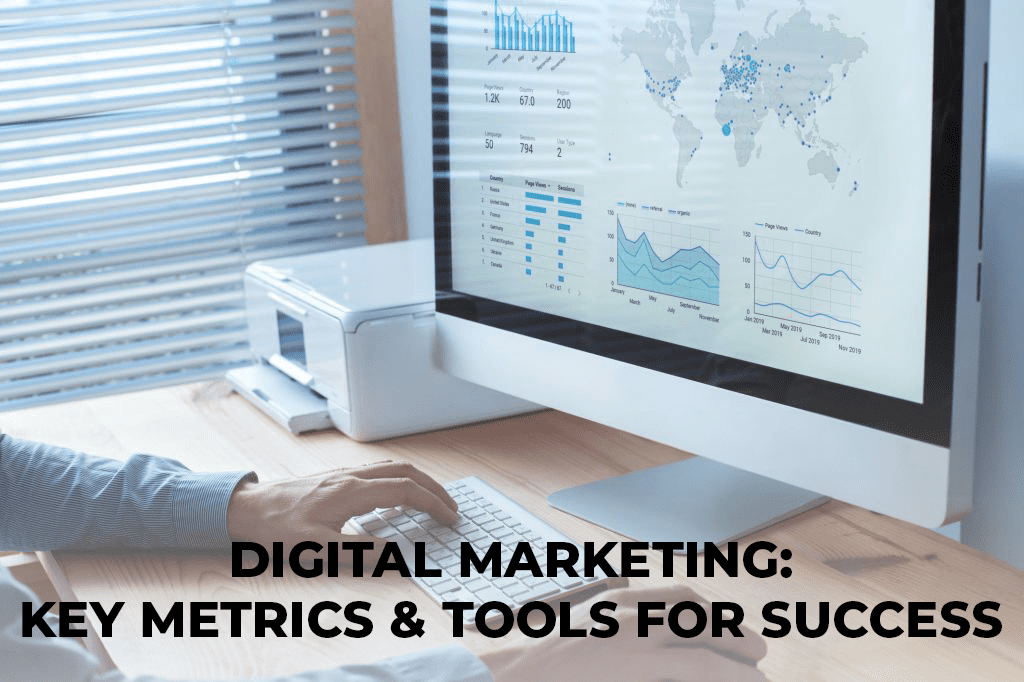With tight budgets and stiff competition in today’s world of digital marketing, understanding your return on investment (ROI) is critical. While tracking ROI lets you see the impact of your marketing efforts and provide data-informed decisions and optimisations. In this post, let’s talk about the need for tracking ROI in digital marketing with key metrics and tools.
Eternal HighTech
Why Measuring ROI in Digital Marketing Matters
Similar to a GPS for your marketing, measuring ROI shows you where you’re going. It gives you transparency into how your investments are doing and are achieving their intended objective. Here's why it's crucial:
Budget Allocation: Understanding with what marketing channels and campaigns are driving the most ROI allows for better spend appropriation.
Optimization: By finding out what’s working and what’s not, you can improve your tactics to receive better results.
Accountability: Measuring the ROI will ensure the team is held responsible with the use of resources in the marketing effort.
Goal Achievement: Tracked metrics enable you to monitor the path you’re making toward your marketing targets and help you implement corrections as required.
Digital marketing ROI measurements — key metrics.
In order to correctly measure ROI, you must concentrate on the metrics keyed to your particular campaign targets. Here are some essential metrics to consider:
1. Conversion Rate
The conversion rate is calculated using the ratio of your website visitors to those you convert into customers via actions such as purchasing a product, subscribing to an email list, or completing a contact form.
Formula: (Number of Conversions / Total Visitors) * 100
2. Customer Acquisition Cost (CAC)
CAC is a measure of how much money you’re spending to attract each new buyer. It lets you know how well you’re investing in customer acquisition money.
Formula: Total Marketing Costs / Number of New Customers Acquired
3. Customer Lifetime Value (LTV or CLV).
In other words, CLV measures how much money a customer will give on average during all of their time as a user of your company. It’s an important yardstick in measuring the lifetime value of your customers.
Formula: Average Purchase Value × Average Purchase Frequency × Average Customer Lifespan
4. Return on Advertising Spend (ROAS)
ROAS — Revenue per Dollar Spent in Advertising. Especially in evaluating results from paid ad campaigns!
Formula: (Revenue from Ads / Cost of Ads) * 100
5. Click-Through Rate (CTR)
This is also known as PPC (Pay per Click), and it’s one of the most popular forms of digital advertising for businesses with small budgets. It can be used to help increase lead generation from your email campaigns or other digital ads . PPC services allow you to
Formula: (Number of Clicks / Number of Impressions) * 100
6. Cost Per Click (CPC)
CPC stands for cost per click; the price you pay for every click to your digital ads.
Formula: Cost of Advertising / Number of Clicks
Ways to measure ROI in Digital Marketing Tools.
Google Analytics: It’s completely free and provides great statistics for the amount of web visitors, conversions, and user behaviour. Its critical to track the performance of your web site and advertisement efforts. ## Instruction: You are provided a sentence written by AI, rewrite so that it looks like a human wrote it
Google Ads and Facebook Ads Manager: They give you great in-depth analysis on your adspend (including impressions, CPC, CPA, ROAS), clicks, conversions, and ROI.
Marketing Automation Software: Email marketing performance can be monitored and analyzed using tools such as HubSpot, Marketo, or Mailchimp.
Customer Relationship Management (CRM) Software: Tools like Salesforce or Zoho CRM are designed for handling customer data while tracking interactions with customers, which ultimately can be used in the calculation of Return on Investment.
E-commerce Analytics Tools: In case of the e-commerce store, analytics tools integrated in platforms such as Shopify, WooCommerce or Magento can help measuring sales, revenue or behaviour of customers.
Conclusion
Calculating the ROI of digital marketing is crucial to take data-backed decisions, optimize your strategy and ensure the right allocation of your marketing budget. To track key metrics that align with your campaign goals and use the best possible marketing tools, it will help to discover critical information about your efforts’ performance. Also note that tracking and calculating ROI is an iterative process, you must constantly monitor and optimize your campaigns for success over time in the digital advertising market.


